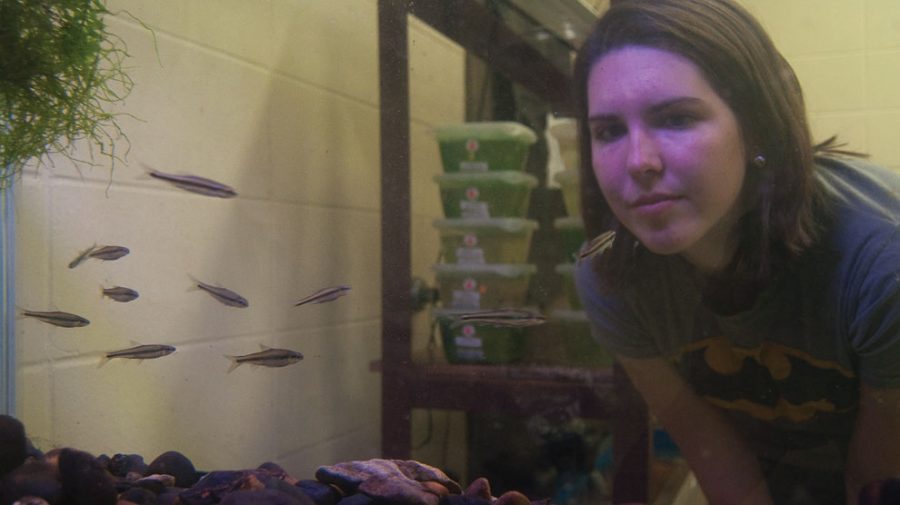Ryan Earley researches behavioral changes at the University, but his project began much earlier.
“This particular project is an extension of Mark Garcia’s undergraduate research project that he conducted at California State University Fresno with me,” Earley said in an e-mailed statement.
“My research has historically focused on social experience, and Mark and his team have taken our earlier data on lizards and transformed those into a series of new hypotheses, which they are currently testing,” he said. “My initial role was to develop the conceptual basis for the experiment. Now, I assist the students in the development of tools, experimental design, data analysis, presentations and writing manuscripts.”
Joining in collaboration are undergraduate students Josh Aquino, Matt Honkanen, Martin Johnson, Joseph Murphree and Jonathan Wilson. Alumni have contributed to the project in the past couple of years as well. Earley serves as the project’s principal investigator in the lab.
Aquino has been working on the project since spring semester of 2010.
“In the Earley lab we research various topics,” Aquino said. “They include aggression in animals, social attractions such as social eavesdropping and hierarchal structures. We study these interactions in order to understand neurological pathways and how the brain processes information and how this information can be used to affect social behaviors.”
Earley continued, “The project is a truly integrative endeavor that asks questions about behavior, neurobiology, endocrinology and gene expression. The goal of the project is to understand how animals translate previous social experiences (winning or losing) into future changes in behavior.”
According to Earley, the collaborators will use the behavioral changes they observe to evaluate which parts of the brain are affected by fighting experiences.
“We do this by examining changes in the expression of ‘immediate early genes’ like FOS immediate early genes, which, as their name implies, come online very early to regulate numerous cellular processes,” he said. “In the brain, these processes include: 1) enhanced neurotransmitter/hormone synthesis, 2) greater neurotransmission rates, and perhaps 3) reorganization of the brain’s neural circuits.”
Students are using a variety of techniques as well as paying close attention to metabolic parameters, where they are looking at energy storage in the liver and muscle. The information will assist in helping to develop new hypotheses about the mechanisms that cause major behavioral changes, according to Earley.
The project is constructed around the brain, and the students use animals because they are considered good model organisms that can serve as virtual petri dishes. The chosen species is the Anolis carolinensis, or the green anole lizard.
“We use the green anole lizard to address our questions because they are highly territorial, engage readily in fights over space and exhibit dramatic changes in behavior based on winning/losing or the intensity of a previous aggressive contest,” Earley stated.
Aquino said they also study the Mandarin killifish, the only self-cloning vertebrate on the planet. He says using this organism is important because of the extreme similarities between the fish and humans.
Parts of the project have already been completed and 2011 is set to mark the end for this study on behavior.
“There are phases,” Aquino said. “There is behavioral modification and then there’s a molecular biology section and then there’s a physiological analysis section. We’re just beginning the physiological analysis and the molecular portion, which are the final phases.”
“Some of the students are developing the tools for examining brain gene expression and are refining their skills in brain sectioning and identification of neuroanatomical features,” Earley said. “The team has done a fantastic job thus far.
“This project will be finished by summer 2011. At that point, we will have extraordinarily cool data on behavior, tissue metabolism, and brain activity patterns in the lizards. We will be able to explore how these physiological changes relate to winning/losing and to the intensity of the aggressive contests.”









